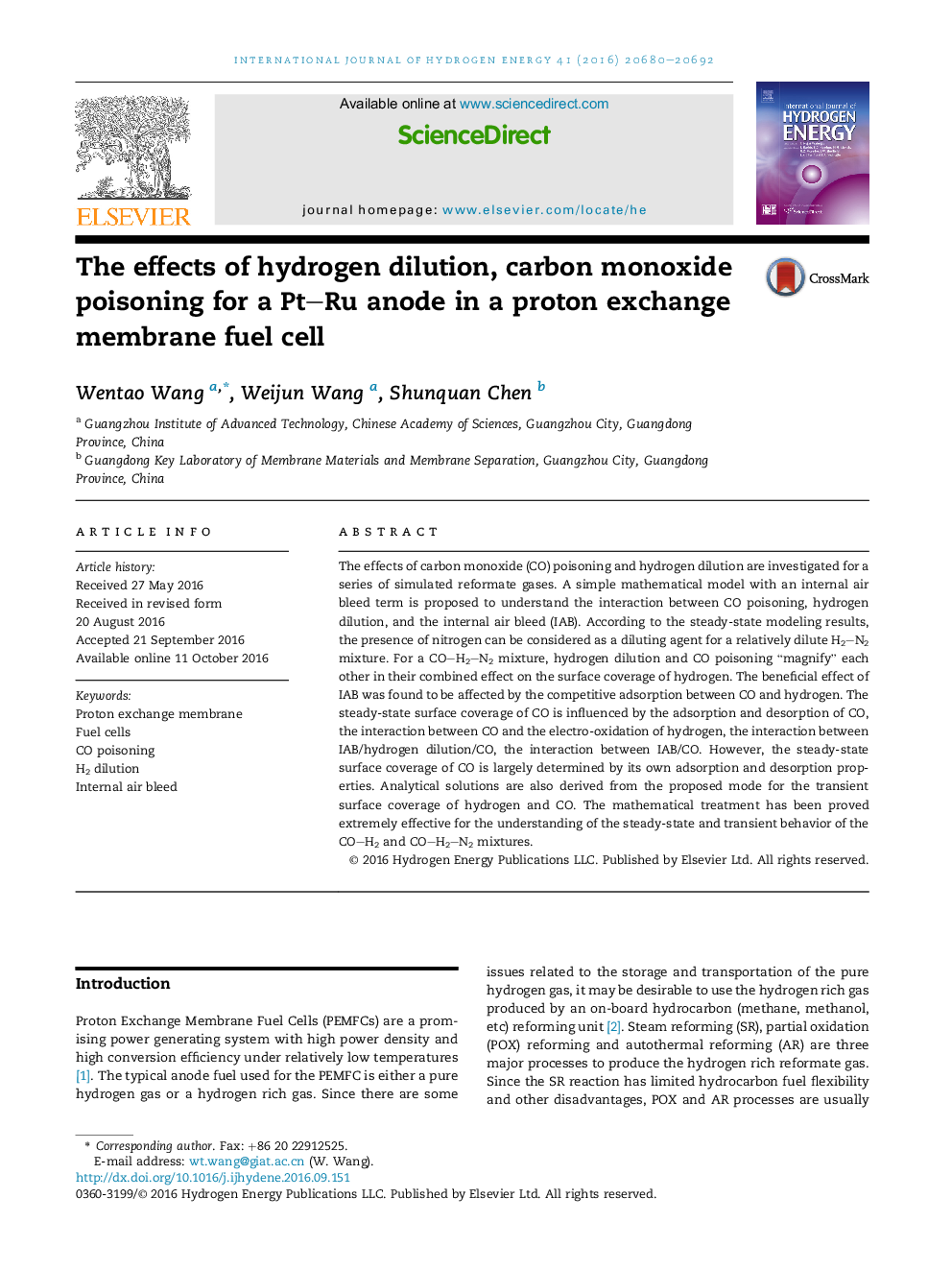| Article ID | Journal | Published Year | Pages | File Type |
|---|---|---|---|---|
| 5148162 | International Journal of Hydrogen Energy | 2016 | 13 Pages |
Abstract
The effects of carbon monoxide (CO) poisoning and hydrogen dilution are investigated for a series of simulated reformate gases. A simple mathematical model with an internal air bleed term is proposed to understand the interaction between CO poisoning, hydrogen dilution, and the internal air bleed (IAB). According to the steady-state modeling results, the presence of nitrogen can be considered as a diluting agent for a relatively dilute H2-N2 mixture. For a CO-H2-N2 mixture, hydrogen dilution and CO poisoning “magnify” each other in their combined effect on the surface coverage of hydrogen. The beneficial effect of IAB was found to be affected by the competitive adsorption between CO and hydrogen. The steady-state surface coverage of CO is influenced by the adsorption and desorption of CO, the interaction between CO and the electro-oxidation of hydrogen, the interaction between IAB/hydrogen dilution/CO, the interaction between IAB/CO. However, the steady-state surface coverage of CO is largely determined by its own adsorption and desorption properties. Analytical solutions are also derived from the proposed mode for the transient surface coverage of hydrogen and CO. The mathematical treatment has been proved extremely effective for the understanding of the steady-state and transient behavior of the CO-H2 and CO-H2-N2 mixtures.
Related Topics
Physical Sciences and Engineering
Chemistry
Electrochemistry
Authors
Wentao Wang, Weijun Wang, Shunquan Chen,
